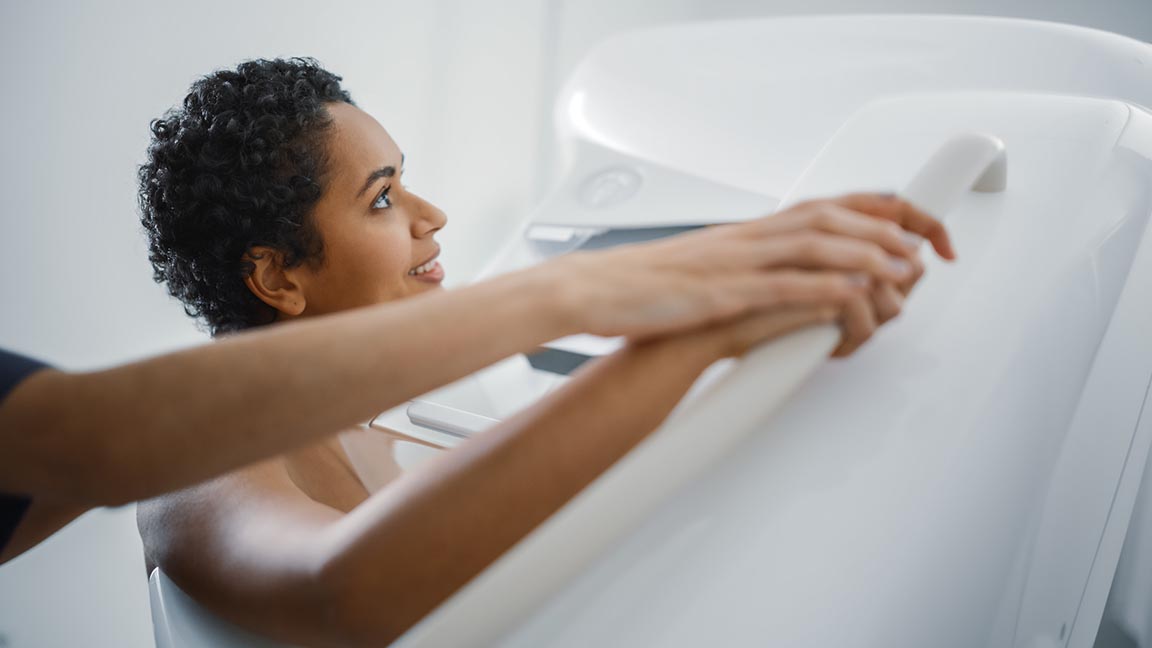Screening mammograms are critical because they can help detect breast cancer early when it’s more easily and successfully treated. If you’ve never received a mammogram, you may be unsure of what to expect.
Kim Ford, a mammography technologist at Tidelands Health Imaging Network, our region’s comprehensive imaging provider, says mammograms save lives and that women should not fear having that important first one.
“This is something you do to keep yourself safe,” Ford says. “Mammograms have helped us get a handle on breast cancer. You want to catch it at its earliest stages so something can be done about it.”
What is a mammogram?
A mammogram is specialized medical imaging that uses a low-dose X-ray to visualize the inner workings of the breast and enable radiologists to look for abnormalities or changes in breast tissue. Tidelands Health offers 3-D mammography, which has been shown to improve cancer detection rates when compared to standard 2-D mammograms.
3D mammography is especially beneficial for women with dense breasts, which have a high proportion of fibrous or glandular tissue and relatively little fatty tissue. In fact, the type of 3D mammography offered through Tidelands Health has earned FDA approval as superior to standard 2D mammography for routine cancer screenings of women with dense breasts.
When to have the first screening
The team at Tidelands Health Breast Center recommends women at average risk of breast cancer begin regular mammograms at age 40.
Women who are at high risk for breast cancer should get a breast MRI and a mammogram every year, typically starting at age 30. In consultation with a care provider, some women may begin regular screenings at an earlier age depending on unique circumstances and risk factors.
The best time to schedule a screening is after your period because breasts can be sensitive and tender just before the menstrual cycle, Ford says.
Caffeine can also make the breasts more sensitive, so Ford encourages women to abstain from caffeine before screening.
How to prepare for the screening
To prevent something foreign from showing up on the images, lotions, perfume and deodorant should not be applied the day of your screening.
“It can show up as something, and then we may have to bring you back for additional imaging,” Ford says.
Enjoying this story? It’s free to republish. Learn more.
Tattoos won’t affect the process, but it’s important to remove breast jewelry.
“Removing jewelry is important because doing so results in an optimal image,” Ford says.
Other jewelry, such as necklaces or dangling earrings, are OK and can be adjusted so they don’t appear on your imaging.
The screening process
After completing any necessary paperwork, patients are taken to a private area, where they undress from the waist up and wear a gown provided for the exam.
“I always explain what I’m going to do, and I try to help my patients feel relaxed and get them to laugh,” Ford says. “I think keeping patients informed throughout the whole process helps them feel more in control, which in turn can help them feel more comfortable.”
During the screening, the technologist positions the breast on a platform and a plastic paddle is lowered to compress the breast tissue. This can cause temporary discomfort, depending on the sensitivity of your breasts. At least four images are captured of each breast at different angles. The compression takes just seconds while the patient holds her breath to limit movement during the scan.
“The actual mammogram takes less than 10 minutes,” Ford says.
After the screening
It may take a few days before your physician shares the exam’s results. At Tidelands Health, patients also receive a letter with the results within about two weeks.
On occasion, patients may be asked to return for additional imaging.
“If you are called back for additional imaging, try not to worry,” Ford says. “Most of the time, it’s nothing to be concerned about. We may just need to get extra pictures or use a different approach. We are just being thorough.”
Where to go for a screening
It’s easy to get a screening mammogram at Tidelands Health. Simply call 843-701-5532 to schedule.
“Don’t wait and say, ‘I’ll get around to it,’” Ford says. “The No. 1 misconception is that you don’t need it because you don’t have a family history of breast cancer. It’s important for all of us to be diligent about our mammograms to keep ourselves safe. Routinely taking advantage of screening mammograms can save your life. It’s that serious.”





